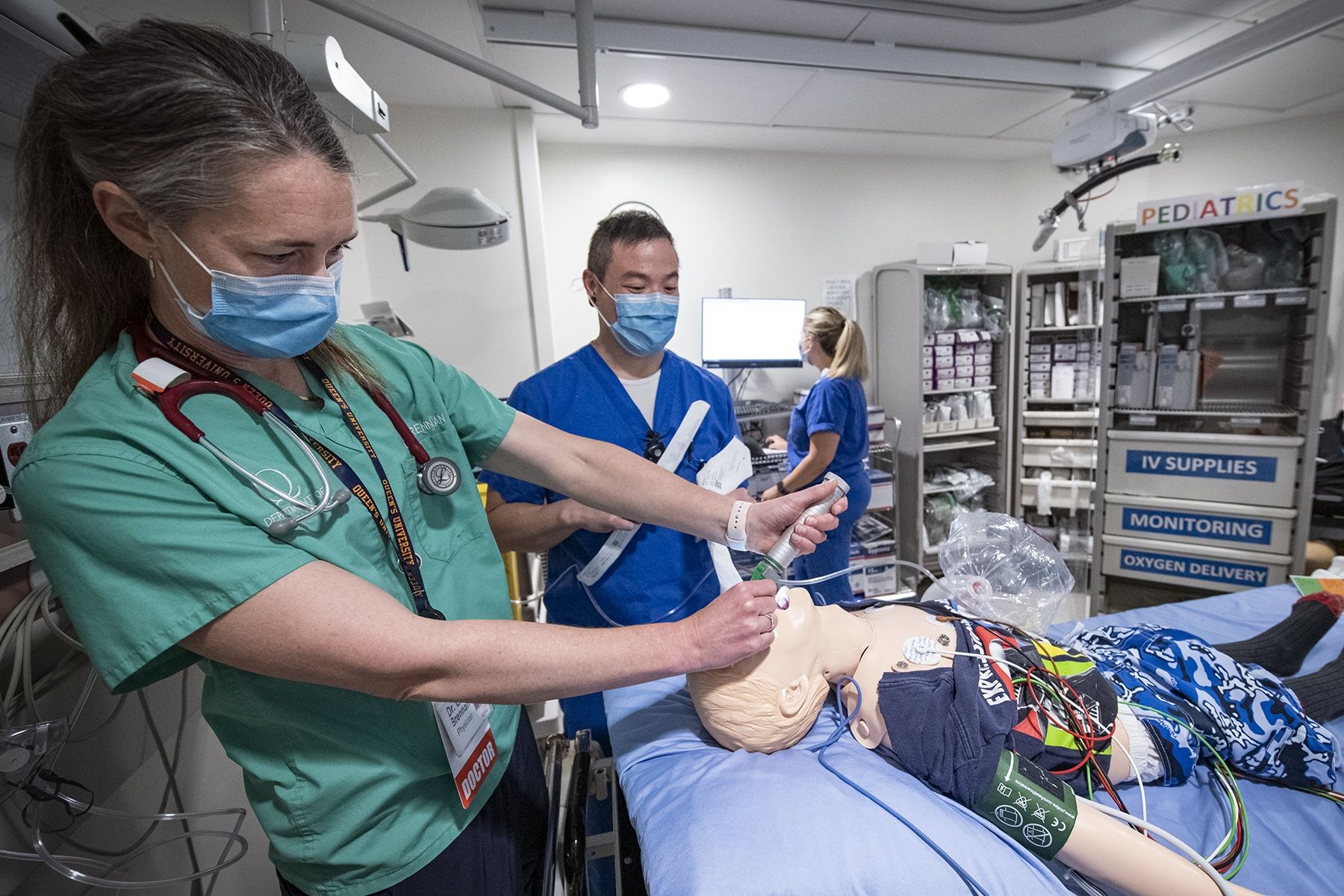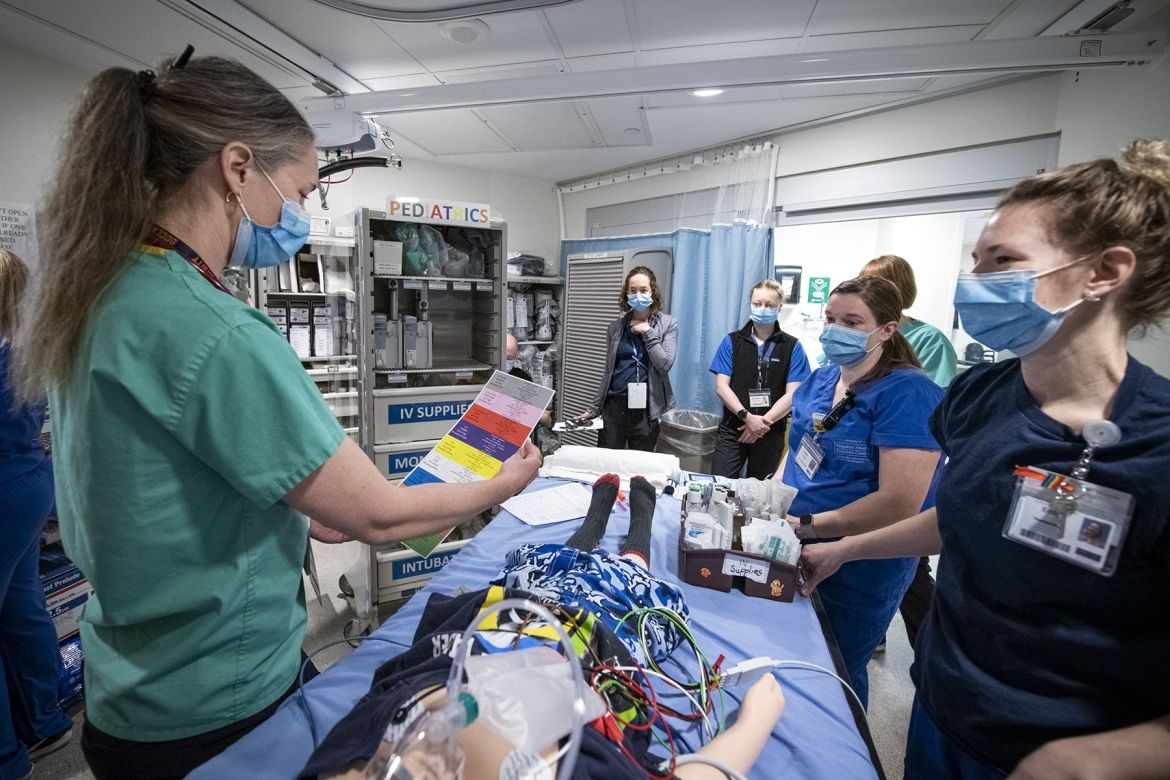Effective immediately masking is required for everyone when present on all inpatient units, in the Emergency Department (ED), the Urgent Care Centre (UCC), and the Children’s Outpatient Centre (COPC).

As the old saying goes, ‘practice makes perfect,’ but in a busy environment like Kingston Health Sciences Centre’s (KHSC) Emergency Department (ED), simulation training is serving another very important role.
“I am passionate about medical simulation and how we can use it to improve the quality of care for our patients” says Dr. Kyla Caners, emergency medicine physician and simulation lead for the ED. “It’s really about taking a system or process and testing it again, and again, to improve how we deliver care with a goal of making sure we’re doing it as effectively as possible.”
Dr. Caners – who joined KHSC about a year and a half ago after working in a similar role in Hamilton – and the rest of the ED team have made impressive progress, including reducing the time it takes to deliver life-saving care to young patients who need resuscitation after their heartbeat or breathing has stopped.
“As a result of our simulation training, we realized we could completely reorganize how we store the resuscitation supplies we use for our pediatric patients,” says Dr. Caners. “Depending on the size or weight of the child, you’ll need different size equipment. Through training we were able to find a different way to organize our supplies and as a result we’ve been able to cut the time it takes to respond in half.”
“What’s really incredible about this initiative is how it brings health-care providers from different disciplines together to solve common problems. Our projects have involved collaborations between nursing, respiratory therapy, pharmacy, and physicians.”
This team has also looked at how care is delivered to adult patients who experience a heart attack.
“In a case of a cardiac arrest, we usually know a patient is coming in by ambulance and plan for them to receive care in a certain room in the ED. But what do we do if a cardiac arrest happens unexpectedly elsewhere in the department? We need to ask these types of questions; do we bring the patient to the equipment or is it faster to bring the equipment to them?”
Thanks to the team asking those types of questions, they’re soon going to launch updated code blue carts to help move that equipment to the patient quickly and seamlessly.
Dr. Caners admits health care is often messy and complicated, and unless you step back and really look at it, problems can seem too complicated to tackle. “So instead, we need to focus on the patient experience. We often need to just look at how we can empower staff to be as efficient as possible when doing their jobs and that will benefit our patients.”
Through this kind of quality improvement focused training, the teams are able to really test-drive new ideas before using them in a real-life situation. If the idea doesn’t work right away, it gives the team an opportunity to keep making changes until it’s ready to be rolled out.
“In this type of training, each solution may seem small, but when you add them all up, they can make a big difference to patient care,” says Dr. Caners. “And in an environment like the ED, it’s so important to be more efficient because every second counts.”
Gallery


Members of a multidisciplinary team participate in simulation training in KHSC's Emergency Department, testing out the recently redesigned pediatric resuscitation carts



